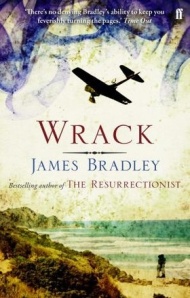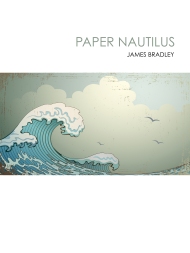Joy McCann, Wild Sea: A History of the Southern Ocean
 Growing up in Adelaide it was easy to feel you lived on the edge of the world. My parents’ homes were only a block or so from the beach, where the low landscape of the city gave way to the windswept waters of St Vincents Gulf; to the south the gulf opened out into the Southern Ocean, after which there was nothing until one reached Antarctica.
Growing up in Adelaide it was easy to feel you lived on the edge of the world. My parents’ homes were only a block or so from the beach, where the low landscape of the city gave way to the windswept waters of St Vincents Gulf; to the south the gulf opened out into the Southern Ocean, after which there was nothing until one reached Antarctica.
Historian Joy McCann also grew up in Adelaide, and in the opening chapter of her marvellously rich and expansive new history of the Southern Ocean she also describes the “peculiar fascination” this wildest of oceans held for her as a child, her memories of learning to swim in its shallows, and “imagining that the huge waves that crashed on the long white beaches had travelled all the way from Antarctica”.
There is something peculiarly appropriate about this idea of the Southern Ocean as an imaginary space. Like all oceans, it is as much a historical and cultural construct as a geographical entity, its northern limits imprecise and contested. Yet while the other oceans have all been home to humans for thousands of years, the Southern Ocean was imagined before it was charted, a theoretical space onto which geographers and philosophers from Ptolemy on projected their own beliefs and theories.
Wild Sea is, at one level, an attempt to chart this process. But like much of the history being done in Australia at present, it is also a thrillingly hybrid creation, drawing together elements of environmental and intellectual history, science and personal observation to illuminate not just the physical and ecological reality of this loneliest of wildernesses, but also the ways humans have understood it.
Appropriately given the scale and mutability of her subject McCann does not attempt to bind her subject to a linear structure. Instead she approaches it in a series of fluidly thematic sections. Although McCann herself is only ever glancingly present, preferring to allow her material to do the talking, at their best these sections might stand alone as essays. Yet collectively they create a framework expansive enough to give shape to the complexities of her subject.
McCann is extremely good at capturing the immensity of the ocean, the degree to which the processes that shape its environments operate on scales that far exceed the human. Nowhere is this more evident than in the sections of the book describing the Southern Ocean’s currents. Beginning with the wonderfully evocative observation that “the planetary ocean is like a body with a network of arteries and veins of water, currents invisible to the eye but constantly flowing”, McCann describes the sheer scale of the Antarctic Circumpolar Current, which sweeps in a great circle around the bottom of the planet, its flow unbroken by any landmass.
As they often are in Wild Sea, the figures are breathtaking. Carrying enough water to fill all the world’s rivers at least 150 times over, the Circumpolar Current is estimated to be up to 200km wide and to extend up to 4km below the ocean’s surface, and when it passes through the funnel of the Drake Passage – the 800km wide channel between South America and Antarctica that was formed when the ancient supercontinent, Gondwana, broke up tens of millions of years – an astonishing 103 million cubic metres surges through every second.
There is more than a shadow of the sublime to figures of this sort, their reminder of our insignificance in the face of planetary processes and deep time, a quality that also echoes through the book’s descent into early explorers’ descriptions of the barrenness of the sub-Antarctic Islands. This quality is counterpointed by McCann’s eloquent descriptions of her own experiences. On South Georgia – the speck of land on which Shackleton and his companions mad landfall in 1916 after crossing 1300km of open sea in an open boat – she describes the “sensory overload” of “the cacophony of bellowing elephant seals, whining pups and trumpeting king penguins [that] mingles with the sounds of the surf rolling on smooth black pebbles”. An albatross appears like “an apparition … A small flutter and powerful wings arch upward in a slow, poised descent”.
Yet in many ways the book’s most powerful moments come when McCann weaves these two frames of reference together, allowing us to glimpse both the scale of the ocean and its wonder. Writing about the southern elephant seals that live and breed on South Georgia, Macquarie Island and the Kerguelen Islands, she reveals that individual seals have been tracked swimming from the Kerguelens to the Antarctic continent, a distance of more than 2000km. And in a passage that echoes the tone of almost mystical exaltation one finds in the writings of many Antarctic explorers, observing that “in the middle of the Southern Ocean, time is measured in latitude and longitude, wave height and wind speed and the proximity of an iceberg. I am feeling disoriented in this ocean, as though time and space have abandoned me.”
Perhaps unsurprisingly given the ways in which climate change is already transforming the southern latitudes the violence of human activity is seldom far away in Wild Sea. On South Georgia, where some glaciers are retreating up to two metres a day, McCann hears the “thunderous crash” of breaking ice; elsewhere she details the horrifying slaughter of hundreds of thousands of whales and seals. Yet despite this the book is ultimately a hymn to connection and wonder, and a recognition of the myriad ways in which the Southern Ocean touches all of us.
Originally published in The Weekend Australian, 28 July 2018.








